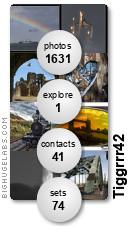Readers with long memories might recall me mentioning my first graphics tablet some time ago. I’ve made some use of it, and while it’s not something I use all the time, it’s not something I’d want to do without. And there lay the problem. At the time I bought it, it was (as these things go) quite remarkably cheap, and unlike just about every other tablet made by Wacom had a slight deficiency that at the time didn’t strike me as anything of the kind. Yup, it’s a Windows-only device. No Mac drivers or support at all. Of course, back then, I’d never even considered the possibility that I might decide to Macify myself, so I didn’t even register that information in my brain.
But a few weeks back, I decided it was time to get some pen control on the Mac. I managed to track down the original CD that came with the tablet, and noticed the distinct lack of Mac stuff. I had a look at Wacom’s website. I goooogled. I muttered. But it was quite clear. If I wanted to have a graphics tablet on the Mac, I’d have to buy a new one. Mutter.
Things have moved on since I got the Volito, and Wacom’s budget range is now known as “Bamboo”. There’s probably some bonkers marketing reason for that, but I try to ignore that sort of thing. The Bamboo range covers the lower end of the tablet market quite nicely. There’s a basic one (called the Bamboo One), there’s this one, somethinng called the Bamboo Fun, which seems to be much the same as this one, except it’s white and comes with more software, and also some larger and more expensive ones.
After a bit of research, I decided that the basic Bamboo was what I wanted - not the cheapest in the range this time, but not too expensive either. Just for once, I didn’t actually get it from Amazon, as it was at the same price in John Lewis in Newcastle.
The Bamboo is an A6 size tablet, which is quite big enough for my desk, and fine enough for the level of accuracy I’m likely to need. And unlike the somewhat cheaper Bamboo One, the tablet area is in widescreen proportions, so it’s much more suited to working with my 20″ display. Nice, that. Unlike the old Volito, where it was really easy to knock the pen off its little slot and have it hover over the sensitive area with amusing consequences of the “where’s my mouse pointer going?” kind, the Bamboo comes with a separate holder for the pen, which seems like a good idea to me. In addition to the pen and main tablet area, the Bamboo comes with four programmable buttons, which can do handy things like “back” and “forward”, “show desktop”, or pretty much whatever you like. Possibly handy, but not essential, though they do come with really cool pretty blue lights ![]() . The real bonus is a touch wheel thingy, which is set up for zooming in and out - great for graphics work. One other nice touch is that rather than being hard-wired, the Bamboo comes with a standard mini-USB lead, which makes it much easier to move it or to use a longer or shorter cable to suit your desk arrangement.
. The real bonus is a touch wheel thingy, which is set up for zooming in and out - great for graphics work. One other nice touch is that rather than being hard-wired, the Bamboo comes with a standard mini-USB lead, which makes it much easier to move it or to use a longer or shorter cable to suit your desk arrangement.
Installation on the Mac was simple enough - plug in to an available USB port, insert CD and run the installer. The device can then be configured from System Preferences from the new Pen Tablet icon. There’s a brief tutorial, and a PDF user manual.
Windows users get some extra software with this model. Mac users wanting software should go for the slightly more expensive Bamboo Fun, which comes with Adobe Photoshop Elements. If you don’t have Photoshop, Elements is actually pretty good, and getting it in a bundle with hardware makes it really good value, so that’s worth considering if you’re after a tablet.
So far, this looks to be another good bit of Wacom kit - build quality looks reasonable, the pen is comfortable to use, and it all appears to work.












